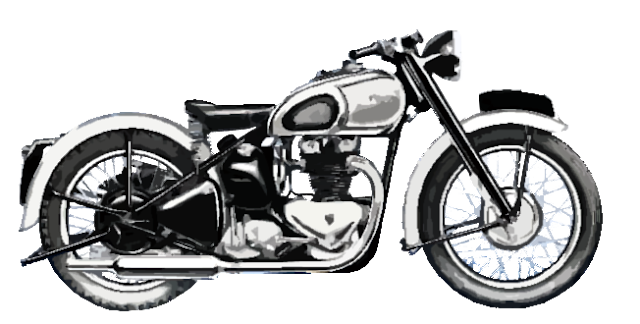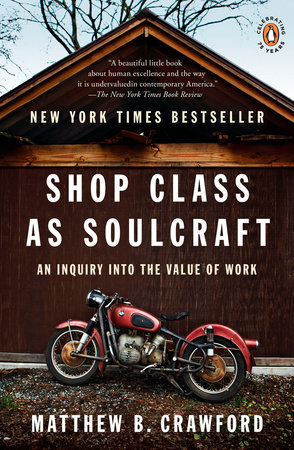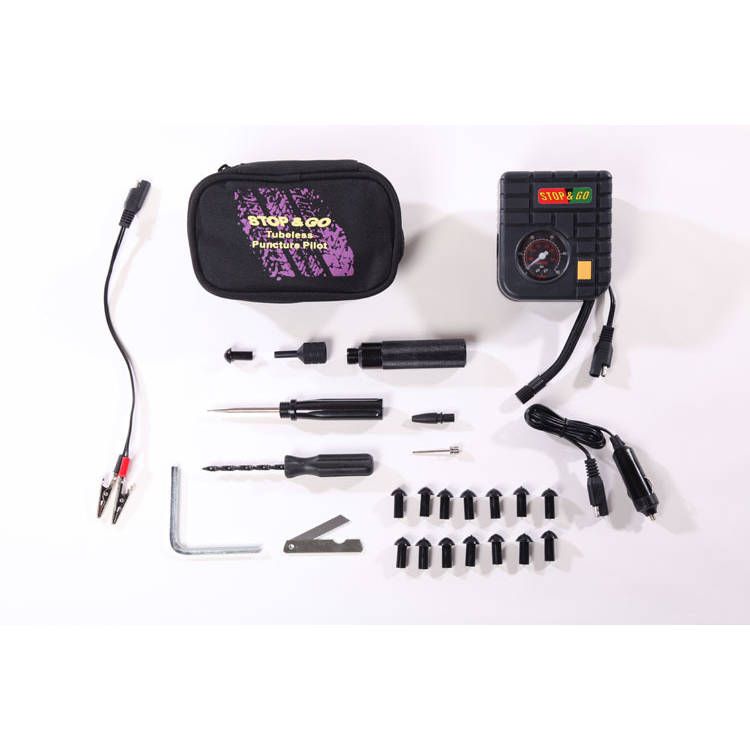 |
Mapping it old-school in Calabogie. Having to stop and
do this throughout the day resulted in a much more
enjoyable ride. |
Ottawa isn’t quite as manic as the GTA when it comes to driving culture, probably because it’s a fraction of the size. I didn’t see the intentional assholery that GTA drivers seem to revel in. That used to be arms-reach from us out in the country where I live, but thanks to COVID and rich people speculating on the real estate market, there has been a cidiot diaspora to my neck of the wooks and aggressive driving is the new norm on our country roads.
The 417 out of Ottawa at noon on Sunday was thrumming along at 130+kms/hr. I kept to a steady 120 on the inside lane and was passed with regularity. When we were in Alberta in July I noted that the speed limits are set reasonably without clinging to 1970s limits designed to generate revenue and justify more police. The 110kms/hr on the highway had everyone moving at about 110kms/hr. The 100 limit on country roads was the same with no one blowing beyond as has become common on our backroads. Ontario’s artificially low limits (and then the intentional ignoring of them until the police and insurance industry feel like making it rain) produces a kind of cognitive dissonance in Ontario drivers. They know the limits don’t mean anything and tend to drive however fast their vehicle feels good at, which in a modern vehicle with advanced tires, anti-lock brakes and computerized suspension and engines is much faster than the limits set for woody wagons in the ’70s.
Once off the madness that is Ontario’s 400 series highway system things settled down and I fell into a nice rhythm on the 508. I usually have to ride miles to find a corner (and corner) where I live in the tedious S.W. Ontario agricultural desert. Speaking of which, I was struggling to understand why my visor wasn’t plastered in bugs while riding through Eastern Ontario woods, but it’s the lack of factory-farmed livestock. Those closely packed animals generate more flies than meat. When you’re not always passing by fowl (sp!) smelling chicken manufacturing facilities or cow paddy strewn fields, there aren’t the kinds of flies that knock your lid off. I didn’t have to stop and clean my visor once on these rides, and being able to ride roads where the corners keep finding you instead of the other way around is like water after days in the desert. Since all the OPP are on Highway 7, there wasn’t a one of them on any of the roads up this way (speed traps aren’t about safety, they’re about income generation – there’s no money in setting up speed traps on quiet roads).
.jpg)
No one sells pens anymore (the Canadian Tire had none even with school starting up in a couple of weeks), but I found some sharpie markers in Calabogie’s McGregor’s Produce, which is a general store that has pretty much everything in it (with a fraction of the footprint of the city-sized Canadian Tire).
It was another sun drenched day, though the shadows from the trees takes the sting out of it, unlike the concrete oven than urban areas turn into. I got the map folded to where I was and markered out a route that took me on the twistiest roads I could find over to Bancroft where I would spend the night.
I hadn’t figured out how to hot-key the 360 camera to auto-fire shots so there are no photos from this glorious day, but perhaps this is as it should be. Google didn’t know where I was and I had to engage my atrophied brain to remember the route, but the map was only a stop away. Instead of constantly aiming at the next waypoint and having the phone barking directions and corrections and other information that I didn’t need (while tracking my progress to offer timely advertising), I was untethered.

I actually doubted my ability to remember turns so started with just the first three, and what a three they were! The 508 through Calabogie is ok, but the 65 to 71 east is SPECTACULAR, to the point where the road had me laughing out loud in my helmet (which I could leave in open face mode because I wasn’t being battered with livestock flies). This magical strip of tarmacadam twists and turns over and around some proper hills; this may be the best riding road in Ontario, particularly for me on this day where I had my head up (nothing to constantly tug my gaze down to the next direction), no traffic whatsoever AND it had just been resurfaced and was billiard table smooth I had a realization halfway through this bit: I don’t care if I’m ‘lost’, rollercoasting along this road was absolutely brilliant!
I stopped for a drink and to review next steps at the end of 71 at Calvyn’s Takeout. I wish I wasn’t so soon from a big breakfast or I would have stopped, it smelled fantastic. The next bit had some arterial highways then onto smaller back roads. 41/28/514/515/512 was another great mix of twists and turns on pretty much empty pavement (I don’t think I passed or was passed by anyone over the next hour and this was on an August Sunday with lovely weather). I stopped in Quadeville to update the mental map and pressed on when the mosquitos prompted me back into motion. A thin film of mozzies was the only thing on the visor, unlike the plump livestock flies that’ll take an eye out down south.
By now I was hours deep into the woods. I can appreciate the diversity and cultural richness that population offers, but the manic nature of time in these places exhausts me. Out here you tick along at the speed of the breeze, and when you see someone else you make a point of giving them a wave because you’re not tripping over piles of people all day.
I ended up missing the turn south to the 68 and stayed on the 66 all the way up to Wilno on Highway 60 (the road that goes through Algonquin Park). It was all the advertising for Opeongo camping that made me realize I’d missed a turn and had come too far north to Hwy 60, but it didn’t matter. The roads were clear and I was enjoying the ride. The alternate route added some kilometers to the day, but even in August the sun is up for a long, long time. I stopped in Barry’s Bay and charted a new route down 62 to Bancroft where I had a hotel room waiting.
62 was another beautiful Eastern Ontario road with views through the hills in the lengthening shadows on winding, though higher-speed roads. I made good time and after about 350 kilometers, most of which were on twisty country backroads, I was ready to hang up my boots for the night.
The Bancroft Inn & Suites is just the sort of place that would wind up someone from the city. It’s basic, but clean and doesn’t offer fancy coffees or fancy anything else; it was the perfect stop for the end of this analog day. It was about as far as I could get from the neon-disco GLO hotel I’d stayed in the night before, but that jived with the thematic point.
By now I’m 3 days into a ride and far away from where I’d been starting to have PTSD anxiety dreams about work. There is nothing like breaking out of a routine to clear your head and offer you some perspective. My only regret is that I kept wanting to share moments with my partner but she was booked solid back home. I’ve never done more than a 4 day trip on the bike, and I think that’s a goal now. Getting into the rhythm or riding along unfamiliar roads to a new destination is incredibly energizing. I need to do this for more than 4 days at a time in order to get lost in the ride more completely.
The next morning I’d figured out how to hotkey the 360 camera to shoot on auto. I was up early (the joys of being in your 50s) and after a cup of in-room coffee I stepped out into a cool single digit morning. Steam was rising from the lakes as I filled up in Bancroft and found my way directly onto backroads. aiming for Haliburton an hour down the road where breakfast beckoned.
The roads were once again startlingly empty and I rolled unimpeded north east of Bancroft and around the 648 ring road through Highland Grove and Pusey before finally connecting to my favourite Ontario highway: 118. Even with some traffic and construction I was still well in my Zen pocket.
The Kosy Korner in Haliburton is what you’d expect from a $10 country breakfast: 2 eggs, bacon, toast and tatters and bottomless coffee. The service was incredibly quick (less than 5 minutes from ordering to eating), but it was getting full of locals so I decamped to the Upper River Trading Co. where I got a nice Balzac coffee and people watched while going over the map for the day.
Feeling full and caffeinated, I hit the road out of Haliburton by 10am and subsequently enjoyed one of the most meditative rides down an empty 118 yet. Mysterious black lakes and rivers appear on the side of the road and wind into the never ending forest, hinting at what may be beyond. The road weaves through ancient rock and living nature like the best kind of Canadian poetry.
 |
| Cathedrals of stone… |
 |
| The animals here be prehistoric! |
 |
| A ride down a near empty Hwy 118 is something to look forward to. |
Not as busy as the road into Algonquin, the 118 offers similar views without the maddening crowds. As I approached Bracebridge the mania returned. Like many places within reach of the GTA, Bracebridge has turned into a pale imitation of it over the past decade as its population has exploded. As a general rule, the larger and more austentatious the vehicle, the more likely they are to drive like a tool. The first one was a Cadillac Escalade, the rolling definition of fuck-the-world-and-get-yours consumerism, which blew past me at 120+kms/hr (I was doing 95 in an 80 zone). With the Zen bubble popped I switched on my rampant biker paranoia and eased back into the super-heated and pressurized world of Southern Ontario driving culture.
I still eked moments out of the ride through Port Carling to Bala and out through the Mohawk territories to the 400 Highway, but once on the 400 Southern Ontario’s driving mania was in full force as I pulled out onto the highway to discover the trucks all doing 120+kms/hr and the rest doing better than 140. Accelerate or be a moving chicane that’s likely to get rear ended by some doofus in an SUV doing 150kms/hr while looking at his phone.
Back into my usually riding range, I stopped in Creemore for a quick bite having not had anything to eat since breakfast at Kosy Korner that morning. From here in it’s lots of flies and straight lines. The next morning we sat on the porch with a cup of coffee at 7am while enjoying the symphony of backup beepers (5 or 6 of them at once?) along with the bullet crack of nail guns building more houses in the once empty field behind our subdivision. The tintinnabulation of construction was eventually drowned out by our neighbour’s lawn service showing up with their helicopter-loud professional lawn mower (to cut about 200 square feet of grass). We gave up at that point and went inside. Maybe we spend so much time on connected devices in our urban hell holes because we’ve made them so uninhabitable IRL.
There are some beautiful places to live out of the madness that are only an hour out of Ottawa. If we could escape the grip of Southwestern Ontario, perhaps we could find something more livable (and rideable) in the east. I’ve always wanted to live somewhere where you could enjoy the ride at your backdoor, Calabogie delivers it!
Looking back over my longer rides, I think four days is the longest I’ve ever been able to arrange for a motorcycle trip. Max and I did a four day loop around Ontario and Michigan many years ago, but busy work/life responsibilities makes it difficult to pry more time free, though that’s maybe what I need to find balance in this chaos. A colleague just spent 60 days this summer riding out to the west coast to do the PCH. My mind feels rebooted after four days away, I can’t imagine how he’s feeling, but I’d like to.
from Blogger https://ift.tt/M28ohdp
via IFTTT



 The oil filters came in for the end of year oil change (I always put in fresh oil and filter and run them through before the big hibernation). It’s a depressing delivery, but I’ve still got another six weeks or so before the snows fall. With the filters I got some tank pads to stop myself sliding around on the Concours.
The oil filters came in for the end of year oil change (I always put in fresh oil and filter and run them through before the big hibernation). It’s a depressing delivery, but I’ve still got another six weeks or so before the snows fall. With the filters I got some tank pads to stop myself sliding around on the Concours.




















































.jpg)

























